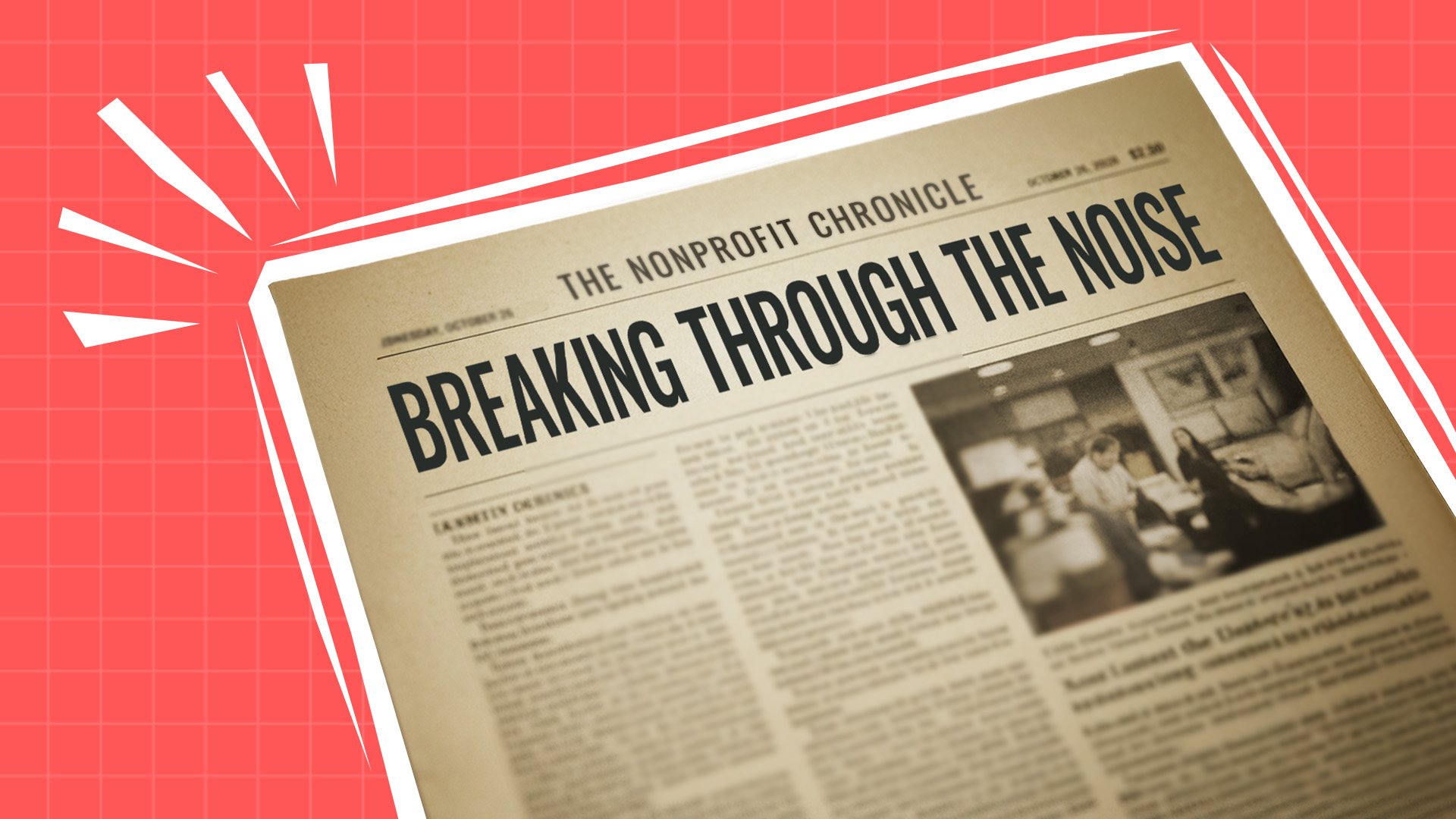
Let’s be honest: getting press is hard. It’s like catching lightning in a bottle: the right journalist, the right moment, the right story. When it happens, it’s magic. Yet far too many nonprofits take that glowing New York Times or Christian Post feature, give it a polite golf clap, and then quietly tuck it away on a “newsroom” page no one’s clicked on since 2016.
That’s a mistake.
Earned media, the kind of coverage you don’t pay for, is one of the most powerful trust-building tools your organization has. It can make potential supporters think, “Oh, this organization is legit,” and it can shorten the time between hearing about you and giving to you. In a world where visibility and credibility are inseparable, that matters more than ever.
Why Earned Media Deserves Your Full Attention
1. Third-Party Credibility Beats Self-Promotion Every Time
When you tell people you’re great, it’s marketing. When The Washington Post says you’re great, it’s validation. Studies show that earned media drives four times more brand lift than paid media (socialtoaster.com).
And let’s face it, people are skeptical. They can smell a paid ad from a mile away. But when a trusted journalist highlights your work, it feels real. It feels safe. And that makes potential donors more willing to open their wallets.
The pandemic made this dynamic crystal clear. Organizations like World Central Kitchen didn’t become household names because they outspent everyone else. They became trusted organizations because they showed up: sharing real-time updates, partnering with media, and participating in public conversations. They demonstrated impact where people were already paying attention.
2. Trust Is the New Currency
Donors today are constantly evaluating whether a cause is credible. Seeing your organization featured by a trusted publication does the work for them. It removes friction. They don’t have to ask, “Is this legit?” They already know.
In fact, people trust earned media twice as much as paid advertising (Nielsen Global Trust in Advertising Report). And when trust is high, decisions happen faster. The more visible and credible you are in public spaces, the shorter the distance between interest and impact.
The truth is that nonprofits now live in two realities at once. They have to do the hands-on work in communities and show up in digital spaces, where legitimacy is built in real time. The organizations thriving today don’t wait to tell stories after the fact; they participate in conversations as they happen. Earned media bridges those two worlds, letting donors see your authenticity and results simultaneously.
3. Media Coverage Actually Moves Donations
There’s research to back this up. Studies show that exposure to charitable stories in the news or on social media increases the likelihood of donating money and time (archive.learcenter.org).
Earned media doesn’t just raise awareness. It accelerates giving. The key is making sure people actually see it—and see you—where they already spend their attention.
The Pitfall: Hiding Your Light Under a “Newsroom” Page
Here’s where so many nonprofits fumble the ball:
- They create a “press” tab that’s basically a list of text links.
- They forget to mention who featured them. (A “Recent Coverage” link doesn’t scream credibility.)
- They never reshare the coverage on social, over email, or anywhere else.
Research shows that the brain can recognize images in as little as 13 milliseconds (MIT). That means our brains can register and make sense of a visual cue—like a logo—almost instantly. Seeing “As featured in Forbes” makes a donor’s brain go, “Oh, this is real.” Seeing “Read more here” in plain text makes their brain go, “Maybe later.” (Spoiler: it’s never later.)
Visibility builds legitimacy. Every time you display the outlets that have covered your work, you make it easier for donors to trust you and harder for your mission to go unnoticed.
How to Turn Press into Power
- Lead with logos.
Create an “As Seen In” section with visual logos. Make it impossible to miss. - Show, don’t tell.
Pull out a compelling quote. “This organization is redefining what hope looks like” hits harder than a headline link ever will. - Share it everywhere.
Post it on social, drop it in your email footer, reference it in appeals, and include it in your direct mail when it fits. - Make it personal.
If someone lands on your site from a press piece, follow up with a story or thank-you that connects emotionally to what they just read. - Track your timing.
Measure how long it takes someone who’s seen your press to donate. You’ll likely find that trust shortens the path to giving.
The ROI: Faster Decisions, Bigger Gifts, More Believers
When done right, earned media can:
- Speed up donation decisions (less doubt = faster giving)
- Increase average gift size (more trust = more generosity)
- Expand your reach organically (no ad budget required)
- Strengthen your brand’s legitimacy long term
At Masterworks, we’ve seen clients turn single press mentions into full-fledged donor pipelines. In today’s attention economy, visibility is legitimacy. A thoughtful earned media strategy can do more than make you look good. It can make your mission impossible to ignore.
So if you’ve been featured in the press, don’t let it collect dust on a “news” tab. Put it where your donors will see it. Let their brains do the easy work: recognize the logo, feel the trust, and take action.













